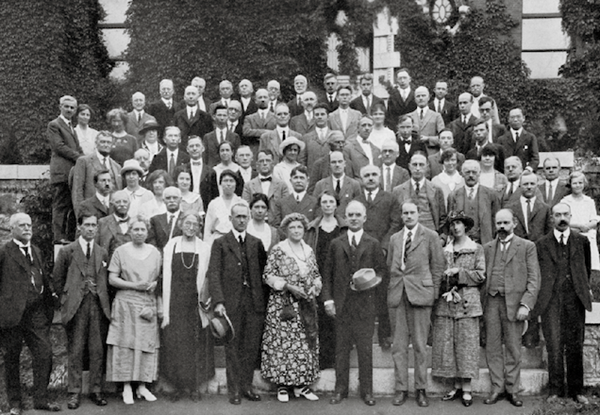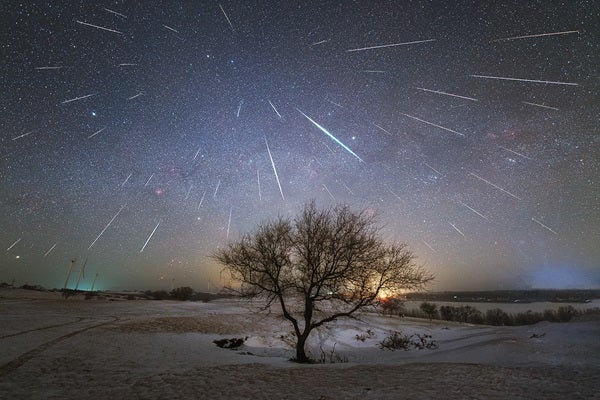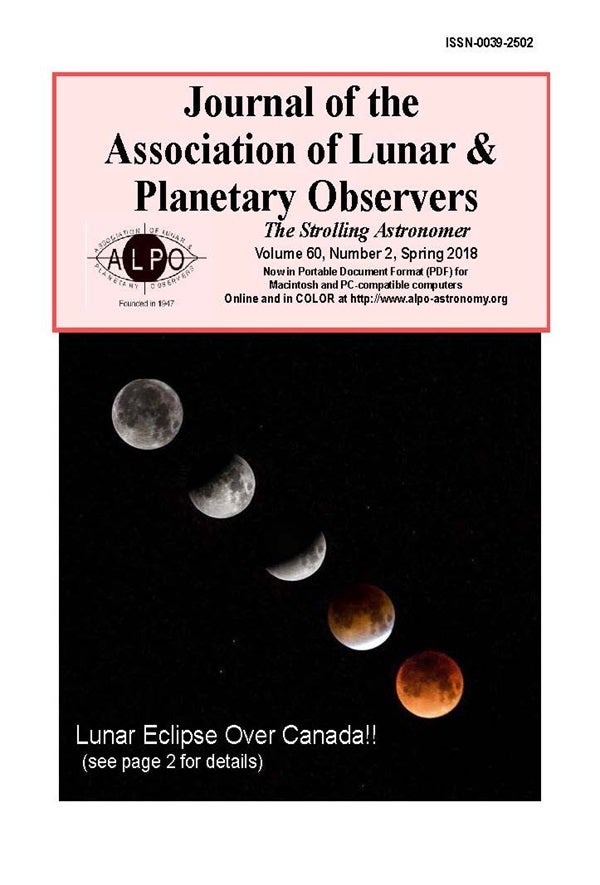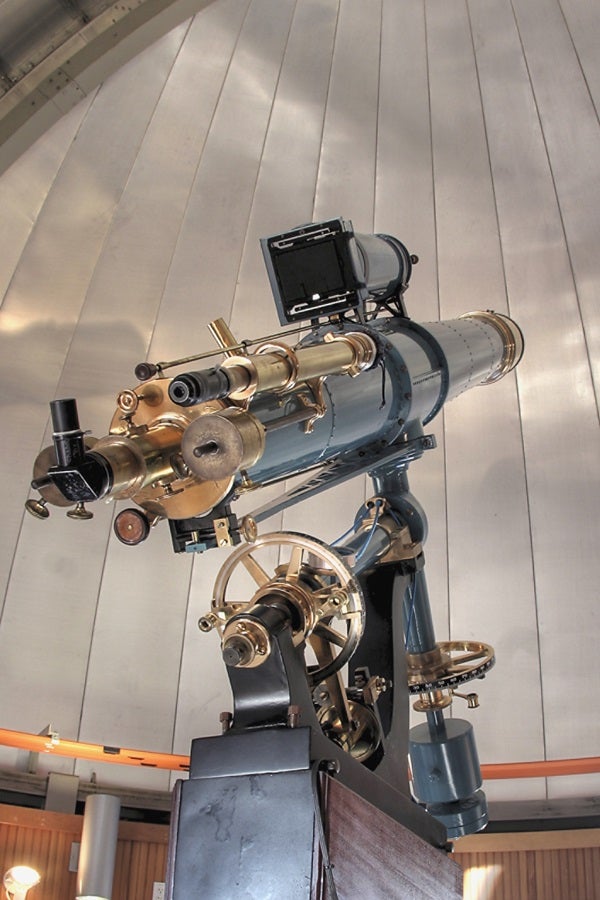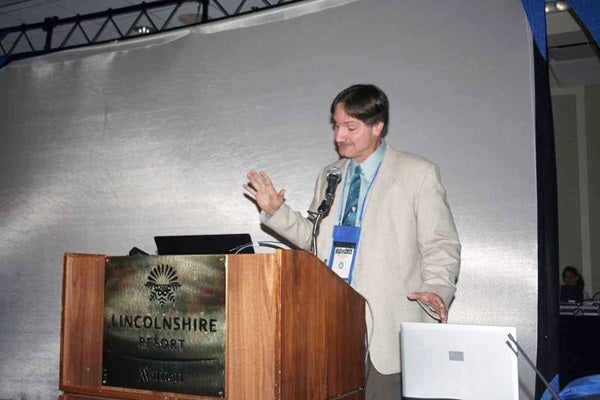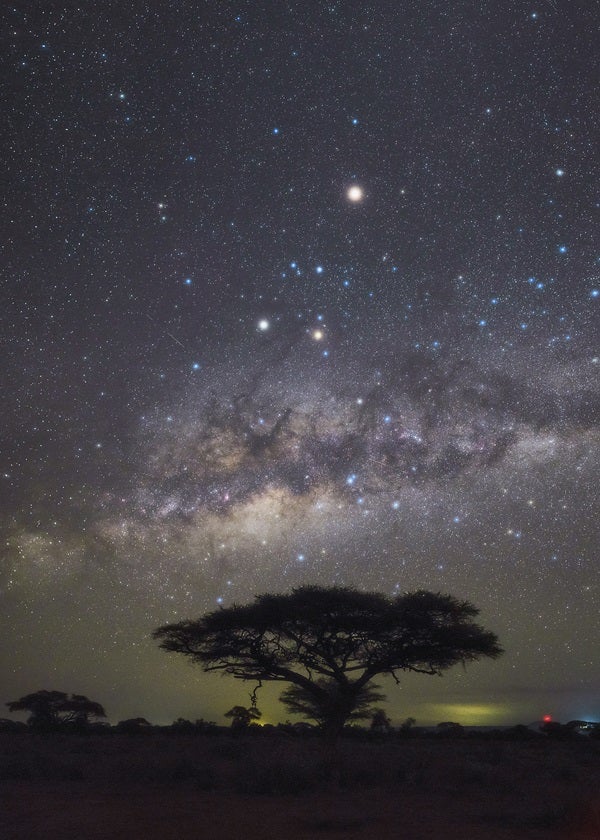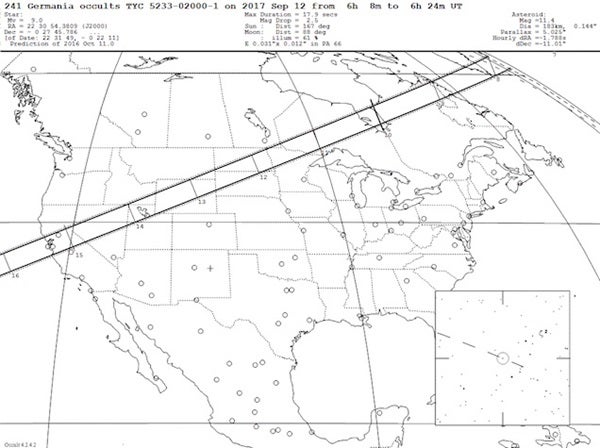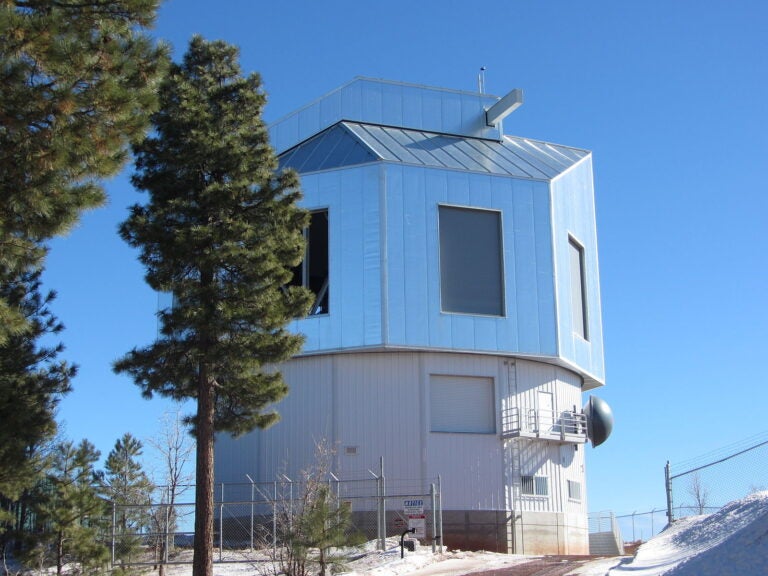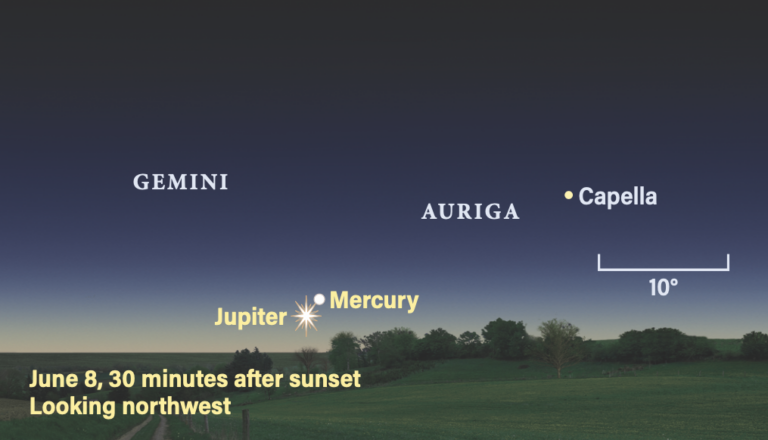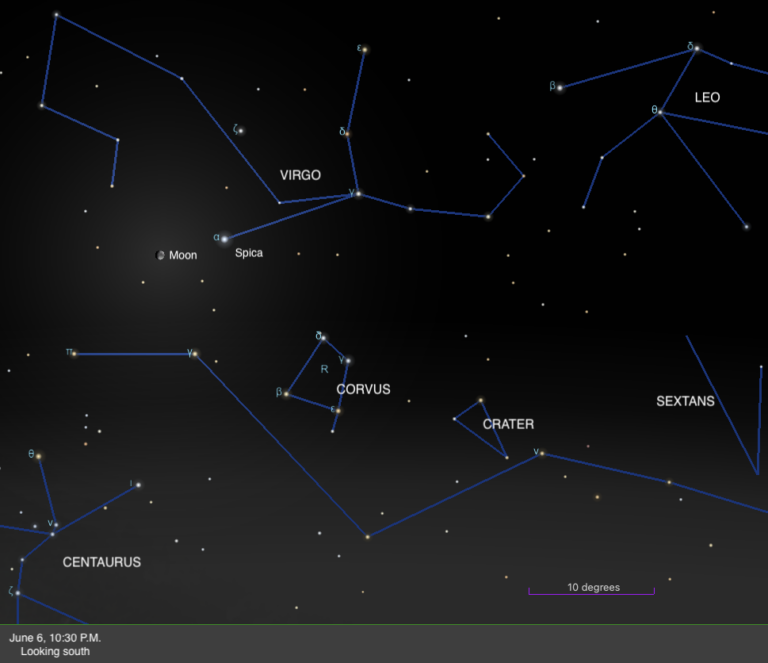It’s all great fun. But some of us would like to participate in more structured programs and possibly contribute data to professional astronomers. A number of organizations around the world can tutor us in observational techniques and data collection. Others can take what we find and use it to advance a particular astronomical field. Let’s take a look at 11 of these organizations based in the United States, and learn a little about their history, what they do, and what you can learn from them and contribute to them.
The AAS is a professional organization whose members are actively engaged in astronomy or a related field of science. Several American astronomers, chief among them George Ellery Hale, founded the AAS in 1899. It is divided into six divisions, such as the Division for Planetary Sciences and the Solar Physics Division, because most professionals specialize in one specific astronomical field.
In partnership with the Astronomical Society of the Pacific, AAS members educate both newly minted astronomers and the general public. The AAS had a strong presence leading up to the 2017 United States total solar eclipse, and in collecting and analyzing amateurs’ eclipse images and data.
The organization holds two main conferences a year, and its divisions put on additional meetings. The AAS produces five professional journals, including The Astrophysical Journal.
Amateur astronomer William Tyler Olcott started the AAVSO in 1911, two years after attending a talk about variable stars given by the longtime director of Harvard College Observatory, Edward Charles Pickering. The AAVSO collects variable star data through observations made mostly by the amateur astronomy community. This information allows the organization to construct well-documented light curves that depict variations in star brightness, and those data are made available to professional and amateur astronomers worldwide.
The AAVSO’s current database contains more than 20 million variable star brightness estimates. About 2,000 amateurs and professionals contribute observations each year.
In addition to boasting a strong observational program, the AAVSO engages in educational and public outreach activities. The National Science Foundation has awarded the organization two grants to conduct citizen astronomy — non-scientists collecting and analyzing observations.
The group usually holds two meetings a year, in spring and fall. It publishes the Journal of the American Association of Variable Star Observers (JAAVSO), and on AAVSO’s website, you can find guides on visual observations, CCD and DSLR imaging, and more. Many AAVSO publications have been translated into other languages, cementing the organization’s international reach.
The AMS, founded as an AAS offshoot by Charles P. Olivier at the Leander McCormick Observatory in 1911, coordinates the efforts of both amateur and professional astronomers interested in meteor astronomy. For several years, Olivier published catalogs of hourly meteor rates based on observations by AMS members. The group collects observations on sporadic (random) meteors, meteor showers, fireballs and bolides, and phenomena related to meteors. It also collects radio meteor data and encourages meteor spectroscopy.
The AMS publishes submitted observations and analysis in its quarterly journal, Meteor Trails.
American amateur astronomer Walter Haas founded ALPO in 1947, with the goal of an academic study of the solar system promoting observations of its objects and events. These run the gamut from the Sun, planets, and the Moon, to comets, meteors and meteorites, satellite transits, and eclipses.
ALPO coordinators lend their support to observers through projects and programs, observing techniques, and observation submission. The latter includes drawings and sketches, images, written reports, and data. Coordinators also prepare reports, such as a Mars apparition report, for publication. Members often work closely with professional astronomers, many of which are ALPO members.
The group holds a conference once a year, often joining with other organizations. ALPO publishes a quarterly journal, the Journal of the Association of Lunar & Planetary Observers (JALPO). JALPO is also known by the name Haas originally gave the publication: The Strolling Astronomer. In addition, ALPO publishes ALPO Monographs on special topics or conference proceedings, and it posts a podcast, called Observers Notebook, on a variety of topics.
The creation of a group dedicated to the study of antique telescopes, instruments, books, and atlases started with conversations between telescope collectors Bart Fried, Bob Ariail, John Briggs, and Ken Launie. Fried took the idea and founded the ATS in 1991, with its first meeting at the United States Naval Observatory in Washington, D.C.
Perhaps you own an old telescope or other piece of vintage astronomical equipment, and you want to learn more about it. Or maybe the idea of collecting a few science-related antiques appeals to you. If so, you owe it to yourself to check out the ATS.
The organization has held its conference at historic venues, including Lick Observatory, Mount Wilson Observatory, Yerkes Observatory, and Lord Rosse’s observatory at Birr Castle in Ireland. The ATS publishes the Journal of the Antique Telescope Society and maintains a website referencing telescope articles with numerous links to other websites.
The concept of an astronomical federation traces its roots back to 1939, when AAS members met at the American Museum of Natural History in New York City. The AL was officially founded in 1947, with Harvard College Observatory director Harlow Shapley serving as its first president.
The AL’s primary objectives are to promote astronomy through education, observation, and research, and to serve as a communications conduit for amateur astronomy clubs. More than 240 astronomy clubs in the United States belong to the League, and there are many more members at large. If your local club belongs to the AL, then you are a member.
The AL is perhaps best known for its observing programs. One of the first and most popular is the Messier Observing Program. A member follows guidelines for making and recording observations, submits a report, and (after verification) receives a certificate and pin. The AL now offers more than 60 observing programs, including ones featuring active galactic nuclei, binocular observing, deep-sky objects, and outreach. Several programs target beginners and those who observe from brightly lit locations.
At the AL’s annual meeting, participants can hear presentations on observing projects, equipment, club activities, outreach, and the like. Each year there are 10 regional meetings. The AL’s main publication, the Reflector, appears quarterly.
The ASP was founded after the January 1, 1889, total solar eclipse. At a post-eclipse meeting, an idea to form a society was presented by Edward Singleton Holden, Lick Observatory’s first director. Today, the ASP has members in some 40 countries.
The ASP has developed and made available many educational resources for a variety of audiences. If you need an activity or program, the ASP is one of the first places to explore.
The ASP often works directly with the AAS and NASA. ASP programs include Project ASTRO, which pairs amateur astronomers with classroom teachers, and the Night Sky Network, a program with the Jet Propulsion Laboratory that supports more than 450 astronomy clubs in public outreach activities.
The ASP hosts meetings during the year. Several ASP publications are available, including the Universe in the Classroom newsletter, and Mercury, the ASP’s quarterly online periodical.
Founded in 2007 by American amateur astronomer Mike Simmons and Iranian-American astronaut Anousheh Ansari, AWB is spreading astronomy to Third World countries through the support of individuals and companies in developed countries. AWB appeals to those with more resources to help the organization address various needs, such as telescopes and training. AWB works to foster these relationships through an interest in the night sky.
AWB has seen success and support for many of its objectives. During the International Year of Astronomy in 2009, AWB sponsored a number of events, including The World at Night, a program to create and exhibit stunning landscape astrophotos and time-lapse videos of the world’s most beautiful and historic sites against a nighttime backdrop. Each April, the group organizes Global Astronomy Month, the world’s largest celebration of the field.
IOTA was founded in 1983 from a growing interest in the amateur astronomy community for observing occultations. Inspired by David Dunham, who observed the first predicted grazing occultation during his doctoral studies, IOTA members observe and record occultations, providing information on lunar limb profiles, suspected double stars, asteroid shapes and orbits, and more.
IOTA conducts an annual meeting, often joining with other organizations. IOTA’s website provides a wealth of information, from the group’s Journal of Occultation Astronomy to observing manuals and equipment recommendations. IOTA also makes available — at no charge — a downloadable program to predict occultations for specific locations.
American amateur astronomers David Crawford and Tim Hunter founded the IDA in 1988. Its goal is to “preserve and protect the nighttime environment and our heritage of dark skies through environmentally responsible outdoor lighting.” The IDA does this through several initiatives, from education to working with architects and municipalities.
The IDA doesn’t just focus on dark skies for observing. There are other consequences to light pollution, and the organization has done an outstanding job at bringing research to the forefront. Wildlife conservation, human health, and even lighting for safer neighborhoods are important aspects of the IDA’s work. The group also has certified a number of International Dark Sky Places around the world.
The IDA holds an annual meeting and sponsors numerous chapters. Information about light pollution, public outreach, lighting recommendations, and political advocacy is available on the IDA website.
The SAS formed in 1998 as the western wing of the International Amateur-Professional Photoelectric Photometry organization, which was founded in 1980. It took on its present name in 2003, one year after incorporating. The SAS is another example of professional-amateur collaborations, with a collection of solid astronomical data at its core.
Most SAS work focuses on the photometry of asteroids and variable stars, astrometry of asteroids and visual double stars, variable star and transient source spectroscopy, polarimetry, and speckle interferometry.
The SAS holds an annual symposium, often meeting with other organizations. Symposiums feature professional astronomers and workshops on specific programs and projects. The organization publishes an online newsletter, and its website contains many videos.
Start contributing
If you’re not involved in any of these organizations, how do you determine which is right for your interests and activities?
First, explore their websites, where you’ll find a trove of information. Perhaps request or download one of the organization’s journals. Does it spark your interest? Is there training or advice readily available if needed? Attend a conference. That way, you can hear talks, meet members, and see if that group meets your needs. Finally, see if what you’re observing now is a match with the observations any of these organizations are requesting.
I strongly urge you to contribute whatever you can. Getting involved with a larger organization will enhance your enjoyment of astronomy.

